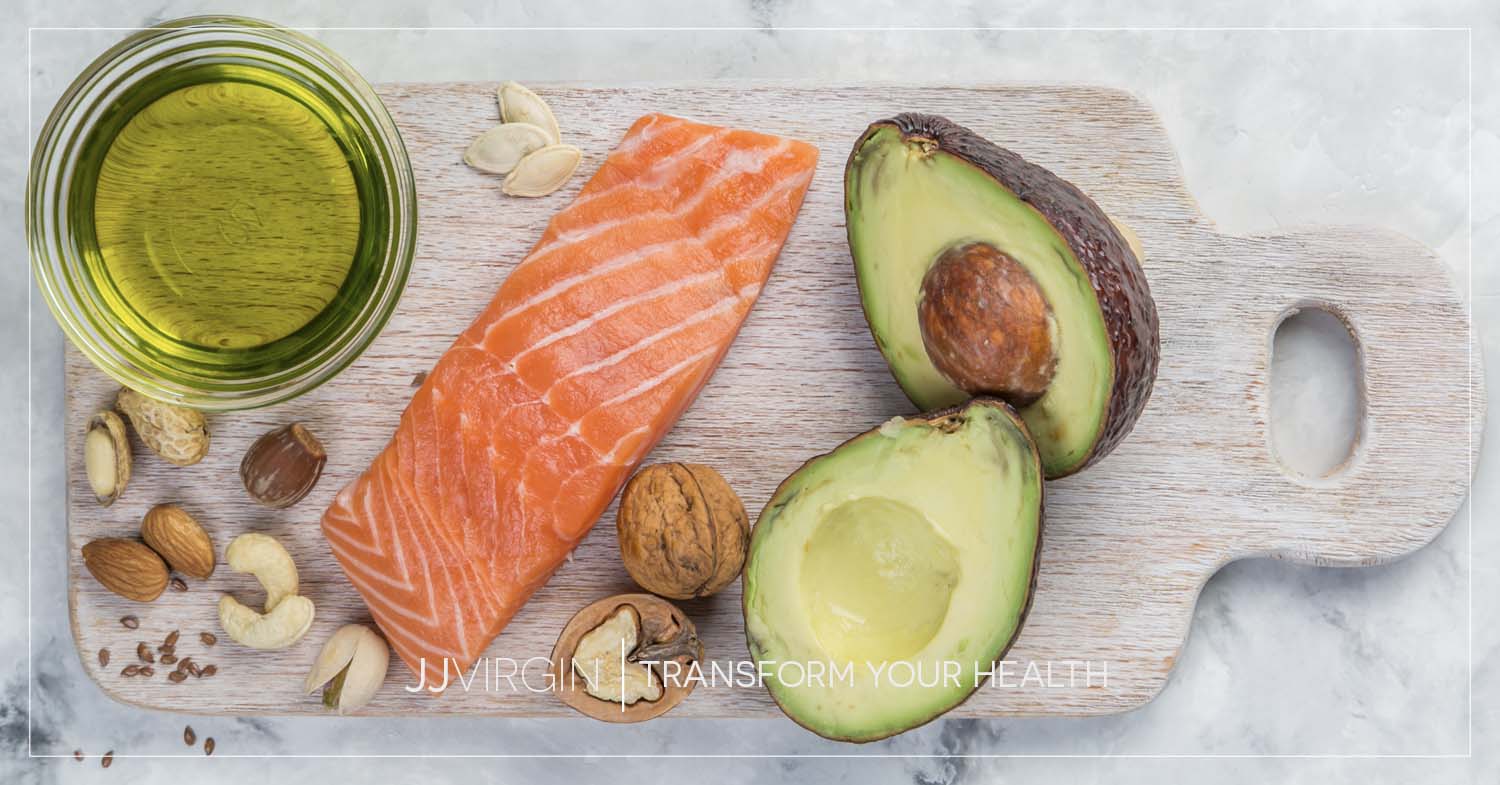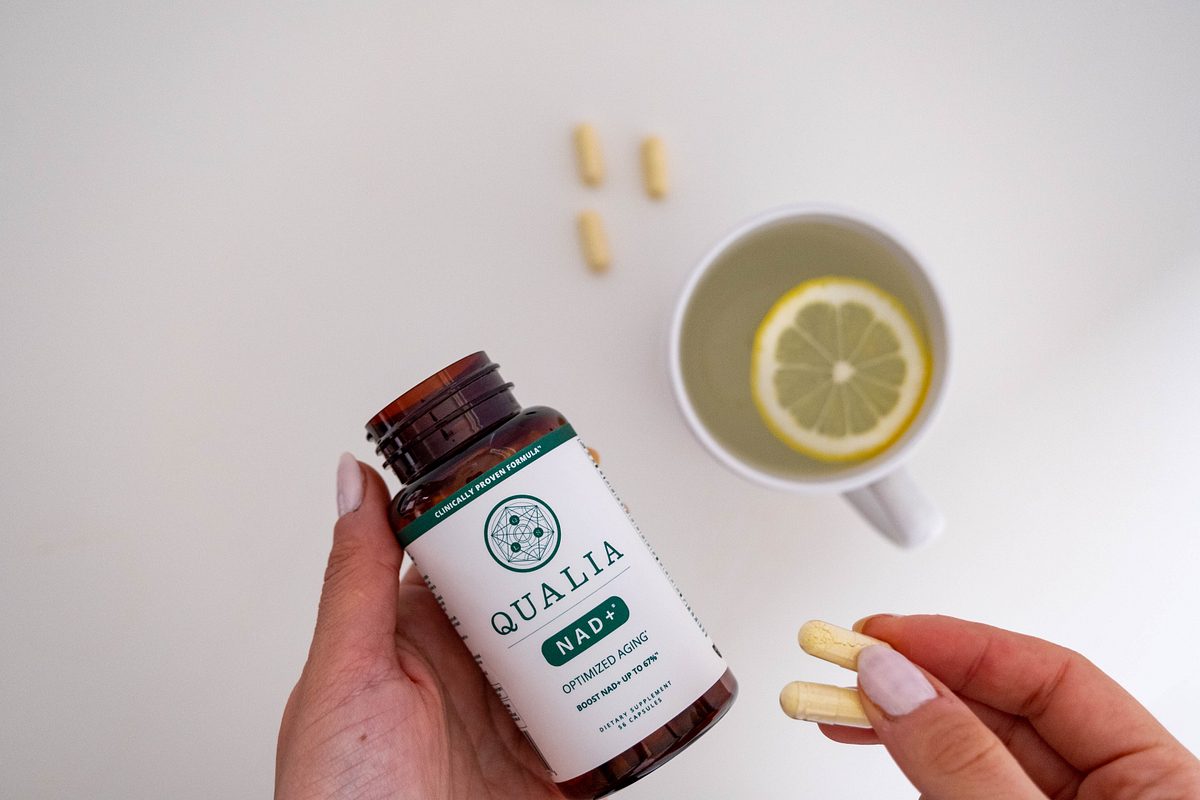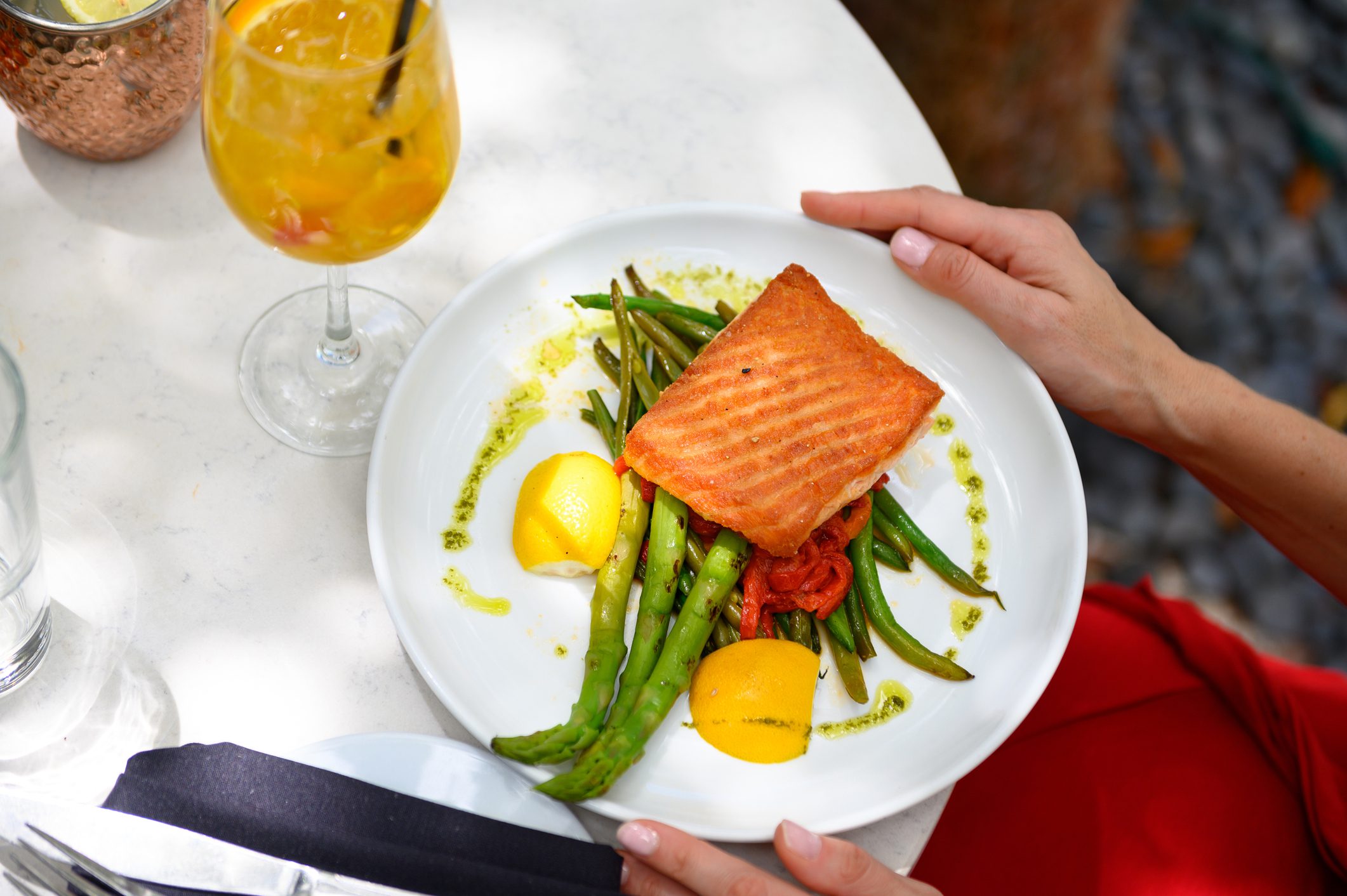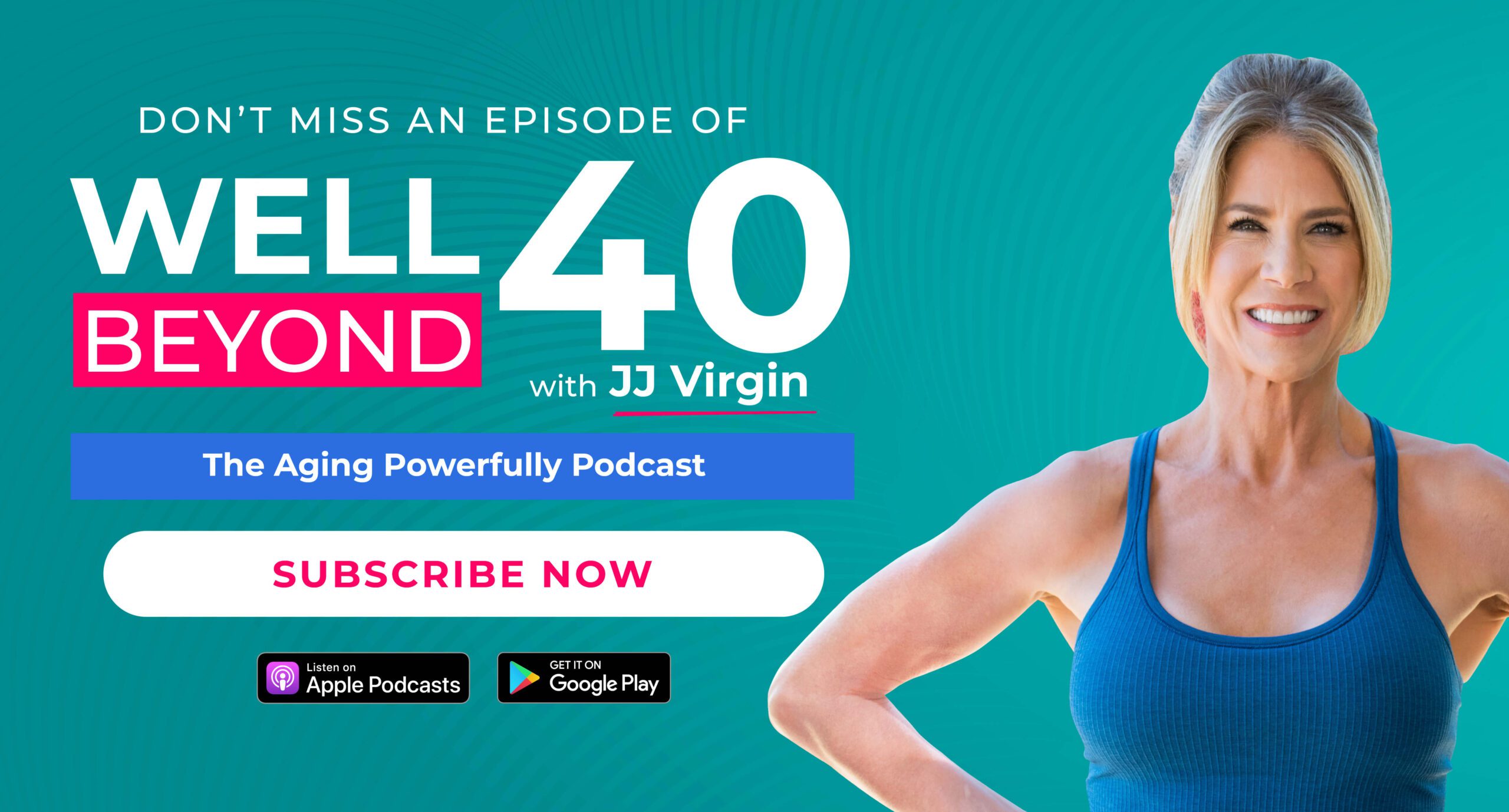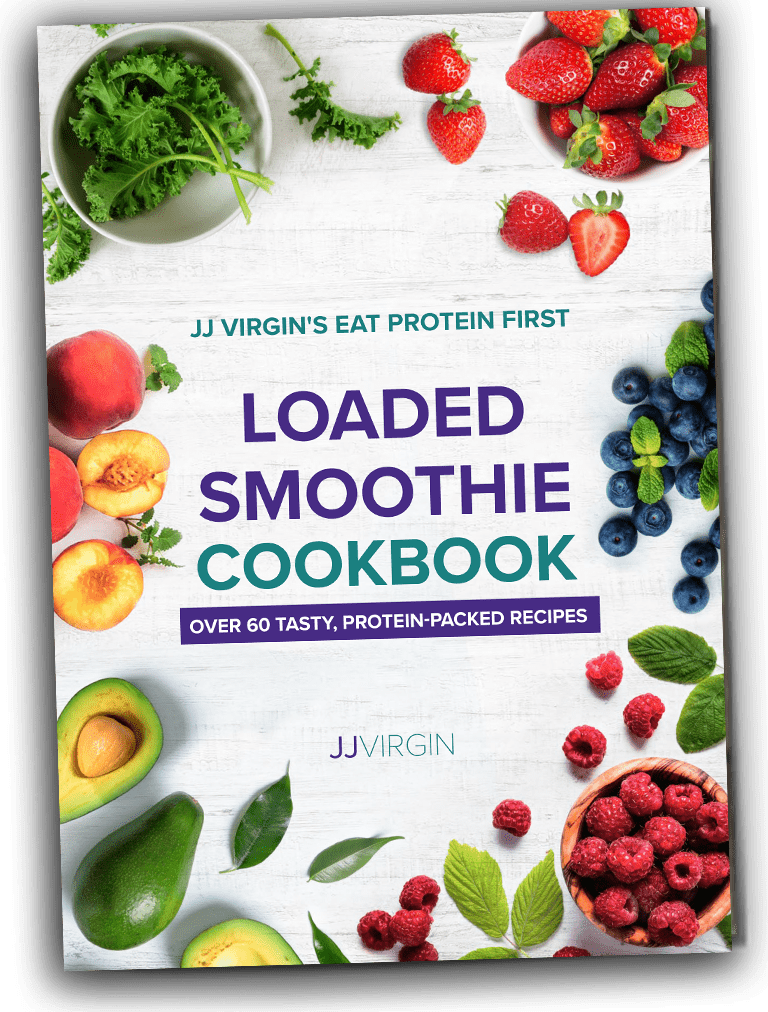The ‘80s were a wild time. We wore lots of Spandex, went through cans and cans of hair spray, and dietary guidelines completely changed the way we ate for the next few decades.
After research came out in the ‘60s and ‘70s, identifying dietary fat as the cause of all our health problems, we spent the next several decades loading up on all the low-fat and fat-free foods we could find. These foods were seen as healthy—yet our health didn’t improve.
These days, more research has come out about the nuances of fat consumption, and it’s more widely accepted that fat is actually good for you.
We’ve learned that fat doesn’t make you fat. In fact, you have to eat fat to burn fat.
It might sound counterintuitive and a little scary to try at first, but if you want your body to dip into your fat stores for fuel, you need to eat more fat to move the needle on your weight-loss goals.
Shifting from being a sugar burner to a fat burner as your primary source of energy is the best way lose weight, stop weight regain, and look and feel your best. My Sugar Impact Diet book provides a clear, actionable plan to gradually break free from your sugar addiction for good.
Fat doesn’t make you fat, sugar does
When you remove the fat from your food, you also remove a lot of flavor and pleasant texture. Something has to replace that fat for the food to be palatable again—and in comes sugar!
A lot of low-fat and fat-free foods are high in sugar, but unless you look at the ingredients and nutrition facts, you’ll be fooled by the healthy-sounding label.
Sugar is the real culprit when it comes to gaining excess fat. Here’s why: the more carbohydrates you eat, the higher your blood sugar climbs. And the higher your blood sugar levels are, the more insulin your body needs to release to return those levels to normal. Your body is always trying to be in balance, and skyrocketing your blood sugar makes that process harder.
High insulin levels signal your body to pack away fat and lock your fat-burning doors. When your body is used to running on a steady supply of simple carbs (like sugar and refined carbohydrates), you never give it a chance to reach into your fat stores for fuel.
Fat, on the other hand, doesn’t raise insulin levels at all!
So why the misguided dietary advice? You can thank the sugar industry. According to the New York Times, “the sugar industry paid scientists in the 1960s to play down the link between sugar and heart disease and promote saturated fat as the culprit instead.”
It’s time to rethink our approach to our plate.
How to burn fat for fuel
The key to training your body to burn fat instead of sugar is to eat fewer simple carbs and more healthy fats, combined with clean, lean protein.
In fact, starting your day with a loaded smoothie is one of the quickest and easiest ways to help your body shift from being a sugar burner to a fat burner (just ask my community!).
When you’re a fat burner, your system still burns carbohydrates for fuel first. Your body initially uses the small amount of sugar from slow-low carbs like quinoa, squash, or legumes. However, your metabolism then quickly turns to your fat stores for energy, which is the ultimate goal.
Eating healthy fats also activates hormones that make you feel full, preventing you from reaching for that second helping of potatoes or after-dinner dessert.
What’s more, because fat is metabolized at a slower rate, fat burners can easily go four to six hours between meals without suffering from sugar or carb cravings.1 Fat satisfies you better, and for longer.
When it comes to body composition goals, fat is your ally—not your enemy.
More benefits of fat
You need to eat fat, not just to burn fat, but to be healthy! In fact, you can’t live without it.
Beyond weight loss, consuming healthy fats:
- Helps you absorb nutrients: Vitamins A, D, E, and K are fat-soluble nutrients, meaning they need fat to best absorb into your bloodstream. These major vitamins support innumerable aspects of your health. You’d be doing your body a serious disservice going entirely fat-free.
- Reduces inflammation: As you’ll learn shortly, there are some foods that create inflammation, and some that put out the fire. Same thing with fats. Foods with monounsaturated fats and omega-3s are known for their anti-inflammatory benefits.2
Learn about the top 15 foods that fight inflammation here.
- Supports heart health: Good fats can decrease the risk of heart disease, regulate blood pressure, improve cholesterol, decrease the growth rate of artery-clogging plaque, prevent cardiovascular disease, and so much more for your heart. (Bad fats, like trans fats, do the opposite.)3
- Keeps hair glossy and skin glowing: Fat is a beauty food, too! Fatty acids make up 85% of the lipid content of your hair. Incorporating fat into your diet can keep hair “healthy, influencing shine, feel, manageability, and strength.”4 The anti-inflammatory benefits of healthy fats improve your skin by reducing redness and acne, and they also help keep your skin moisturized and supple.5
- Supports mood balance and mental health: Dietary fat keeps your blood sugar regulated, which keeps your mood balanced, too. In fact, several studies show that low-fat diets are associated with increased risk of depression, anxiety, irritability, and anger.6 Compared with those who ate low-fat diets, one study on the neurobehavioral effects of dietary fat consumption found that people experienced more positive emotions eating a high-fat diet.7
- Nourishes the brain: Over 60% of your brain is composed of fat! It’s essential to brain function, including your memory and nervous system. If you’re not getting enough quality fats in your diet, it can affect your mental health, cognition, focus, and more.8
Learn more about why a high-carb, low-fat diet is unhealthy for you here.
Not all fats are created equal
Fats are an essential part of a balanced plate. But so are eating the right kind of fats. That’s why one of my mantras for clients is “make an oil change!”
Figuring out fats might sound complicated, but if you follow The Virgin Diet, I did the work for you.
Trans-fatty acids and damaged fats have no place in your pantry. (To find out more, check out this quick video.)
Instead, opt for healthy fats from high-quality sources like my top choices below:
Omega-3s
As I started to highlight above, these incredible fats have so many health benefits! Not only have do they boost brain health and fight inflammation, studies show that omega-3 fatty acids are also a great ally when it comes to burning fat and building muscle.
It’s easy to get started with them. Head to the grocery store with my list of Top 15 Foods for Omega-3s, with plenty of tasty ways to get healthy fats at every meal (recipes included).
If you’re not able to consistently get at least 1-2 grams of omega-3s per day, you’ll want to supplement with a high-quality omega-3 source like Omega Plus. Every softgel contains 1 gram of the omega-3 fatty acids EPA and DHA.
MCTs
Medium-chain triglycerides, or MCTs, can help with everything from slowing aging and defending against infection to improving heart health, and nurturing your hair and skin.
Studies also show that coconut oil’s MCTs can speed up your metabolism and make you feel less hungry, helping you to burn away fat.9,10
You can find MCTs in their isolated form in MCT oil, as a functional ingredient in other supplements (like my protein-packed All-In-One Shakes), or from coconut, where it’s typically derived from. (You may want to avoid MCTs from palm oil—the nutritional benefits are there, but it’s a highly unsustainable source of these fats.)
Learn more about the benefits of MCT oil and how to use it here.
Other sources of healthy fats
The right fats nourish us, rebuild our health, and help us heal. Here are some of my favorite sources of healthy fats:
- Avocados
- Coconut milk, oil, meat, or unsweetened flakes
- Extra-virgin olive oil, or olives
- Raw nuts and unsweetened nut butter (not peanuts)
- Raw seeds: chia, hemp, freshly ground flaxseed meal
- Wild cold-water fish
- Ghee
- Grass-fed beef
- Co-Co Crave Bar
Our bodies thrive on healthy fats like omega-3s and MCTs! When you taper off high-sugar impact foods and incorporate the right balance of healthy fats onto your plate, you’ll be creating steady, sustained energy and burning fat all day long.
Have questions? Follow me on Facebook and Instagram and let me know how my team and I can best support you!
References:
- A Himaya, M Fantino, J M Antoine, L Brondel, J Louis-Sylvestre, Satiety power of dietary fat: a new appraisal, The American Journal of Clinical Nutrition, Volume 65, Issue 5, May 1997, Pages 1410–1418, https://doi.org/10.1093/ajcn/65.5.1410
- Teng, KT., Chang, CY., Chang, L.F. et al. Modulation of obesity-induced inflammation by dietary fats: mechanisms and clinical evidence. Nutr J 13, 12 (2014). https://doi.org/10.1186/1475-2891-13-12
- Pérez-Jiménez F, López-Miranda J, Mata P. Protective effect of dietary monounsaturated fat on arteriosclerosis: beyond cholesterol. Atherosclerosis. 2002;163(2):385-398. doi:10.1016/s0021-9150(02)00033-3
- Marsh JM, Whitaker S, Felts T, et al. Role of Internal Lipids in Hair Health. J Cosmet Sci. 2018;69(5):347-356.
- Pilkington, S.M., Rhodes, L.E. (2010). Omega-3 Fatty Acids and Skin. In: Krutmann, J., Humbert, P. (eds) Nutrition for Healthy Skin. Springer, Berlin, Heidelberg. https://doi.org/10.1007/978-3-642-12264-4_9
- https://www.psychologytoday.com/us/blog/the-science-mental-health/202002/low-fat-diet-can-make-you-angry-irritable-and-depressed
- Lindseth, G., & Petros, T. (2016). Neurobehavioral Effects of Consuming Dietary Fatty Acids. Biological Research for Nursing, 18(5), 573–581. doi:10.1177/1099800416657638
- Lindseth, G., & Petros, T. (2016). Neurobehavioral Effects of Consuming Dietary Fatty Acids. Biological Research for Nursing, 18(5), 573–581. doi:10.1177/1099800416657638
- Stubbs RJ, Johnstone AM, O’Reilly LM, Barton K, Reid C. The effect of covertly manipulating the energy density of mixed diets on ad libitum food intake in ‘pseudo free-living’ humans. Int J Obes Relat Metab Disord. 1998;22(10):980-987. doi:10.1038/sj.ijo.0800715
- Howarth NC, Saltzman E, Roberts SB. Dietary fiber and weight regulation. Nutr Rev. 2001;59(5):129-139. doi:10.1111/j.1753-4887.2001.tb07001.x
